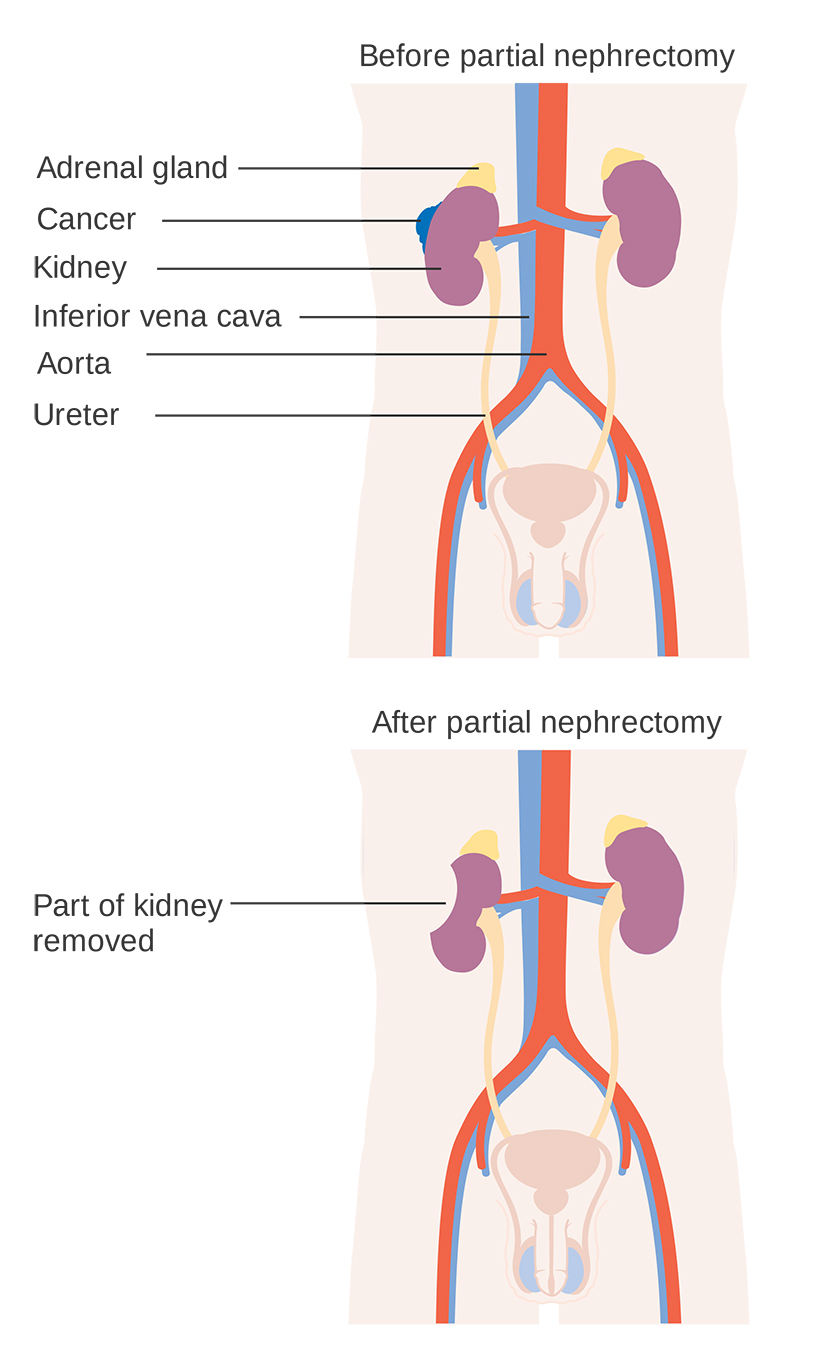Robotic Nephrectomy and how it works
Robotic Nephrectomy and how it works

A robotic nephrectomy is a surgical procedure to remove either part or all of the kidney using small tools attached to a robotic system.
A robotic nephrectomy is a surgical procedure to remove either part or all of the kidney. The kidneys are vital organs that filter water and other waste products from your blood, produce urine and hormones, and mineral levels in your bloodstream. They are small, bean-shaped organs that are located in the upper back of the abdomen.
A nephrectomy is usually required to treat cancer and other kidney diseases, remove an organ that is damaged, or remove a healthy kidney for transplantation. Medical breakthroughs have made robotic nephrectomy the most popular form of surgery for removing kidney tumors, especially small in size tumors.
The two main types of nephrectomy
Radical – Radical nephrectomy involves removing the whole kidney, along with a section of the tube leading to the bladder called the ureter, the adrenal gland that sits atop the kidney, and the fatty tissue surrounding its kidney. Very occasionally, both kidneys need to be removed, and this is called a bilateral nephrectomy.
Partial – A partial nephrectomy is where only the diseased or injured portion of the kidney is removed.
What Is A Robotic Nephrectomy?
A robotic nephrectomy is a surgical method for operating on the kidney using small tools attached to a robotic system. Rather than the surgeon performing the procedure with their own hands, they control robotic arms with a computer. Robotic nephrectomies are far less invasive than traditional surgery and have many advantages and health benefits.
How Does It Work?
A robotic nephrectomy is performed by a surgeon sitting at a computer station who directs the robotic arms’ movements via a computer interface.
The robot’s camera and instrument-bearing arms are inserted through several small incisions in the abdomen. The kidney is detached internally, placed in a bag, then removed through one of the incisions.
Advantages of A Robotic Nephrectomy
The technology used in robotic surgery enhances precision, control, and flexibility of the surgeon’s movements. The robotic arms have seven degrees of freedom, which means they can move in more ways than the human wrist. The vision is also excellent with a high definition 3D view.
There are two main advantages of a robotic nephrectomy:
• There is a much faster recovery time compared to open surgery as the incisions are much smaller. Also, it is superior to open surgery with regards to cosmetics.
• Compared to traditional laparoscopy, the vision is far superior, and the jointed instruments allow very precise dissection.

Risks and Side Effects
As with any surgery, there are risks associated with robotic surgery. However, the technique is very safe compared to open surgery and more efficient than laparoscopy and is now considered the gold standard that all techniques are measured against.
Side effects of nephrectomy may include:
• Pulmonary embolism – the formation of a blood clot in your legs that may move into the lungs
• Infection at the site of the incisions
• Postoperative pneumonia
• Injury to organs or tissue around the kidney
• Problems with the remaining kidney
• Kidney failure
Recovery
Recovery time after a robotic nephrectomy is much shorter than open surgery.
Immediately after surgery, patients are monitored for blood pressure, electrolyte levels, and fluid balance, i.e., the kidney’s bodily functions. Patients will often have a urinary catheter in their bladder for a short time after surgery to drain urine.
Pain and numbness at the incision site are common after surgery. Coughing or sneezing is usually quite painful due to the proximity of the kidneys to the diaphragm. Deep breathing exercises are advised following the surgery to prevent postoperative pneumonia.
Robotic surgery will require a short stay in the hospital. Full recovery will usually take just a few weeks instead of up to 3 months compared to open surgery.
Robotic Nephrectomy with Urology Specialist
During his Urology training in NSW, Dr. Arianayagam was fully trained in all aspects of laparoscopic kidney surgery. While on his two-year fellowship, Dr. Arianayagam built on his training and gained a wealth of robotic surgery experience. Since returning to Australia, Dr. Arianayagam has become one of the most experienced robotic surgeons in Sydney.
He is a proctor for Device Technologies, which supplies the Da Vinci Robotic System in Australia. Being a proctor means Dr. Arianayagam is qualified to teach other surgeons to use this technique.
If you have any questions regarding nephrectomy, robotic surgery, or would like to book an appointment, please feel free to contact Urology Specialist here. Dr. Arianayagam will be more than happy to assist you.
Check out these other robotic surgeries Dr. Arianayagam can provide:
Robotic Prostatectomy and how it works

Everything You Need to Know About Sperm Health
It is not uncommon for men to have troubles with their sperm production, or to develop a sperm disorder. But…

The Benefits of Drinking Water for Urological Health: Do You Really Need 8 Glasses a Day?
We’ve all heard the advice: “Drink eight glasses of water a day” But is this rule as important as it…






